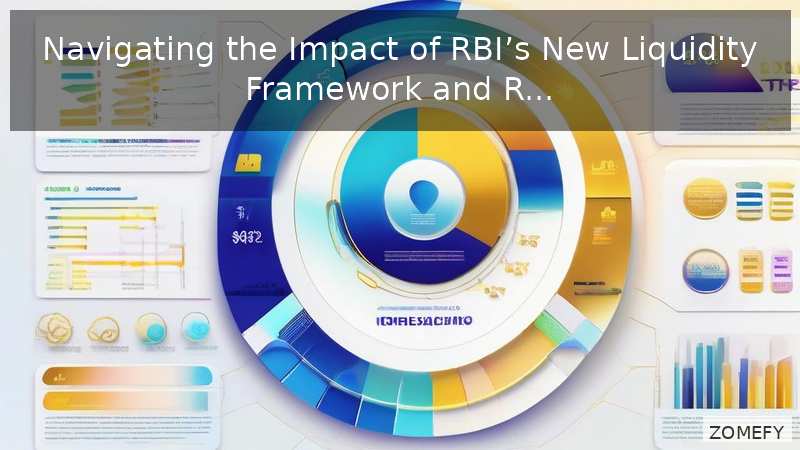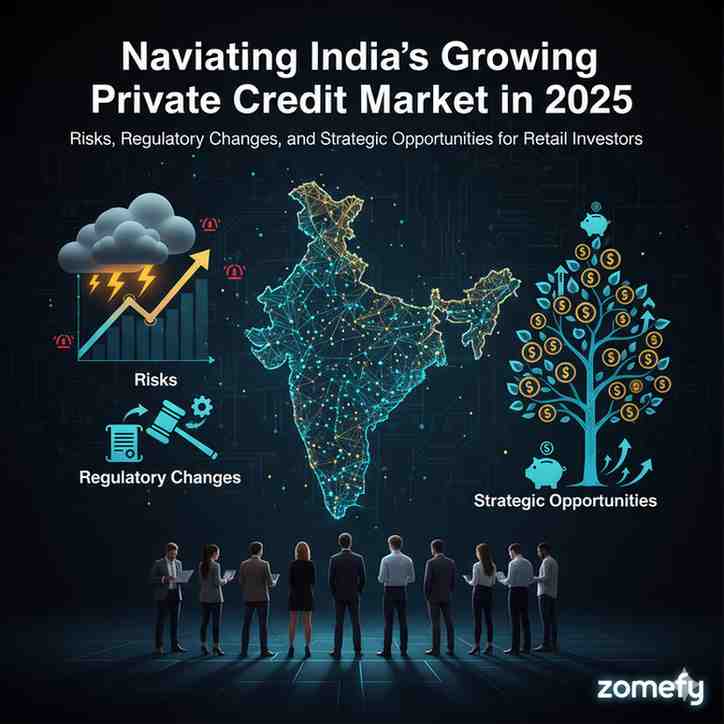Navigating India's Emerging Digital Currency Ecosystem: Opportunities and Risks for Investors in 2025
India's digital currency ecosystem is rapidly evolving, driven by technological innovation, regulatory reforms, and increasing retail and institutional interest.
Navigating India's Emerging Digital Currency Ecosystem: Opportunities and Risks for Investors in 2025
What You Can Do Next
- Read the full article for complete insights
- Save for later reference
- Share with others learning about this topic
Image not available
India's digital currency ecosystem is rapidly evolving, driven by technological innovation, regulatory reforms, and increasing retail and institutional interest. As of 2025, the Reserve Bank of India (RBI) has advanced the rollout of its Central Bank Digital Currency (CBDC), marking a pivotal shift in India’s monetary framework. Simultaneously, private cryptocurrencies operate in a complex legal landscape characterized by a strict 30% tax regime, mandatory disclosures, and a developing regulatory framework under the proposed Crypto Assets Regulatory Authority (CARA). This duality presents unique opportunities and challenges for investors navigating this space. Retail investors and financial professionals must understand the nuances of India's emerging digital currency ecosystem, including regulatory updates, market dynamics, and risk factors, to make informed investment decisions. This article provides a comprehensive analysis of the current state and future outlook of digital currencies in India, practical investment strategies, and risk management considerations tailored to the Indian market context.
The Regulatory Landscape of Digital Currencies in India
India’s regulatory approach to digital currencies has transitioned from an initial restrictive stance to a more structured yet cautious framework. The 2018 RBI directive barring banks from dealing with cryptocurrencies was overturned by the Supreme Court in 2020, reopening banking channels for crypto exchanges. However, cryptocurrencies are not recognized as legal tender and remain heavily taxed. The government introduced a flat 30% tax on all income from Virtual Digital Assets (VDAs) under Section 115BBH of the Income Tax Act, along with a 1% Tax Deducted at Source (TDS) on transfers exceeding ₹50,000 annually. Reporting requirements under Schedule VDA mandate detailed disclosure of crypto transactions in Income Tax Returns, enhancing transparency but increasing compliance complexity.
A major regulatory development in 2025 is the proposal of the Crypto Assets Regulatory Authority (CARA) under the COINS Act, aiming to centralize oversight of VDAs, harmonize tax and Anti-Money Laundering (AML) frameworks, and introduce licensing for exchanges. Meanwhile, the RBI is advancing the launch of its CBDC, the Digital Rupee, intended to combine blockchain benefits with sovereign backing to improve transaction efficiency and financial inclusion.
Key regulatory authorities involved include the Ministry of Finance, RBI, Securities and Exchange Board of India (SEBI), and Financial Intelligence Unit – India (FIU-IND). Despite progress, significant regulatory ambiguities persist, particularly regarding private cryptocurrencies, valuation methodologies, and enforcement, creating risks for investors.
Regulatory Aspect | Status in 2025 | Implications for Investors |
|---|---|---|
| Legal Status of Cryptocurrencies | Permitted but not legal tender | Trading and investment allowed; usage as payment prohibited |
| Taxation | 30% flat tax on gains + 1% TDS on transfers > ₹50,000 | High tax burden; mandatory disclosure; impacts net returns |
| Regulatory Oversight | CARA proposed; FIU-IND reporting mandatory | Increased compliance; potential licensing of exchanges |
| Central Bank Digital Currency (CBDC) | RBI Digital Rupee launched in pilot phase | Government-backed digital currency; stable and regulated |
Comparison of Regulatory Frameworks: Cryptocurrencies vs CBDC
Investors must differentiate between private cryptocurrencies and the RBI-issued Digital Rupee (CBDC). While cryptocurrencies operate in a largely unregulated legal grey area with high taxation and uncertain enforcement, the CBDC enjoys sovereign backing and regulatory clarity.
Aspect | Private Cryptocurrencies | RBI Digital Rupee (CBDC) |
|---|---|---|
| Legal Status | Permitted for trading but not legal tender | Legal tender issued by RBI |
| Regulation | Taxed but no comprehensive legal framework; CARA pending | Fully regulated by RBI |
| Volatility | High price volatility | Stable value pegged to fiat rupee |
| Use Cases | Investment, speculative trading, P2P transfers | Payments, settlements, financial inclusion |
| Risk | Regulatory uncertainty, fraud, price manipulation | Low counterparty risk, backed by RBI |
This comparison highlights the safer but less speculative nature of CBDC investments compared to private cryptocurrencies, which offer higher return potential but come with elevated risks.
Market Dynamics and Key Players in India’s Digital Currency Ecosystem
India’s digital currency market encompasses a diverse set of participants, including cryptocurrency exchanges, blockchain startups, financial institutions, and the RBI’s CBDC project. The retail investor base has grown rapidly, with over 20 million active crypto investors as of 2025, according to industry estimates.
Leading cryptocurrency exchanges such as WazirX, CoinDCX, and Giottus dominate trading volumes and have adapted their compliance frameworks to align with the evolving regulations. These platforms facilitate access to various digital assets including Bitcoin, Ethereum, and emerging altcoins, as well as NFTs.
The RBI’s Digital Rupee initiative is currently in pilot stages across selected cities and sectors, focusing on retail and wholesale use cases to reduce transaction costs and improve transparency. Financial institutions like SBI and ICICI Bank are actively integrating CBDC infrastructure for payments and settlements.
Company/Platform | Type | Key Features | Compliance Status |
|---|---|---|---|
| WazirX | Crypto Exchange | Wide asset range, P2P trading, INR deposits | FIU-IND registered, tax compliant |
| CoinDCX | Crypto Exchange | Advanced trading tools, staking options | FIU-IND registered, AML/KYC compliant |
| Giottus | Crypto Exchange | Focus on security, regulatory adherence | Registered under PMLA, tax compliant |
| RBI Digital Rupee | CBDC | Government-backed, low-cost transactions | Fully regulated by RBI |
Performance Metrics and Investment Vehicle Comparison
Investors can access India’s digital currency ecosystem through direct cryptocurrency investments, crypto mutual funds, and emerging digital asset funds. Below is a comparison of key performance metrics for popular investment vehicles linked to digital currencies.
Investment Vehicle | 1-Year Return (%) | 3-Year Return (%) | Expense Ratio (%) | AUM (₹ Cr) |
|---|---|---|---|---|
| Bitcoin (BTC) | +18.4 | +45.2 | 0 (direct asset) | N/A |
| Crypto Mutual Fund - Alpha Digital Fund | +12.7 | +38.5 | 1.75 | 1,200 |
| Blockchain ETF - India Tech Chain | +15.3 | +42.0 | 1.25 | 950 |
| RBI Digital Rupee Savings Account | ~4.5 (interest rate) | Stable | Nil | Not applicable |
While direct cryptocurrency investment offers high returns, it comes with volatility and regulatory risks. Funds provide diversification and professional management but at higher costs. The Digital Rupee offers stability but limited yield, suitable for risk-averse investors.
Opportunities and Risks for Investors in 2025
India’s digital currency ecosystem presents compelling opportunities alongside significant risks. Understanding these factors is critical for prudent investment decisions.
Opportunities: - High Growth Potential: Cryptocurrencies and blockchain technology are rapidly expanding, offering outsized returns in a growing market. - Diversification: Digital assets provide portfolio diversification beyond traditional equities and bonds. - Financial Inclusion: The Digital Rupee aims to bring unbanked populations into the formal economy, expanding market reach. - Technological Innovation:** Exposure to blockchain-based innovations, DeFi, and NFTs is increasing.
Risks: - Regulatory Uncertainty: Pending legislation and evolving rules could impact asset legality and taxation. - Volatility: Cryptocurrencies remain highly volatile, with price swings exceeding 50% common. - Tax Burden: The 30% flat tax on gains plus TDS reduces net returns. - Security Threats:** Fraud, hacking, and exchange insolvency risks persist.
Pros | Cons |
|---|---|
| High return potential | Regulatory ambiguity |
| Portfolio diversification | High price volatility |
| Access to innovative tech | Taxation and compliance complexity |
| Government-backed CBDC stability | Limited yield on CBDC holdings |
Actionable Strategies for Investors:** - Conduct thorough due diligence on exchanges and assets. - Use regulated platforms compliant with FIU-IND and PMLA guidelines. - Maintain detailed transaction records for tax reporting. - Diversify exposure between private cryptocurrencies, crypto funds, and the Digital Rupee. - Stay updated on regulatory developments. - Consider risk tolerance and investment horizon carefully.
Risk-Return Analysis of Digital Currency Investments
The following table compares risk-return profiles of various digital currency investment types in the Indian context, helping investors align choices with their risk appetite.
Investment Type | Expected Return (%) | Volatility (Annual Std. Dev.) | Regulatory Risk | Liquidity |
|---|---|---|---|---|
| Direct Cryptocurrencies (e.g., BTC, ETH) | 15-40 | 60-80 | High | High |
| Crypto Mutual Funds/ETFs | 10-25 | 40-60 | Moderate | Moderate |
| RBI Digital Rupee Accounts | 4-5 (interest) | Low | Low | High |
Future Outlook: Navigating the Path Ahead
India’s digital currency ecosystem in 2025 is poised for significant transformation. The rollout of the RBI Digital Rupee is expected to accelerate adoption of digital payments and enhance financial inclusion. The establishment of CARA will likely bring more regulatory clarity and investor protection, fostering confidence in the sector.
However, challenges remain. The government’s stance on private cryptocurrencies is still evolving, with the possibility of tighter restrictions or clearer legal frameworks emerging in the near term. Taxation policies may also be refined to balance revenue needs with market growth incentives.
Technological advancements such as Decentralized Finance (DeFi) and Non-Fungible Tokens (NFTs) are gaining traction in India, creating new investment avenues but also regulatory challenges. Indian fintech startups and blockchain firms are innovating rapidly, supported by government initiatives like the Digital India program.
Investors should adopt a proactive approach by monitoring policy developments, leveraging regulated platforms, and balancing risk with opportunity. Collaboration between regulators, industry participants, and investors is crucial to shape a robust, transparent, and investor-friendly digital currency ecosystem.
Key Future Developments | Expected Impact |
|---|---|
| Full-scale RBI Digital Rupee launch | Enhanced digital payments, reduced cash dependency |
| Establishment of CARA | Centralized regulation, improved compliance |
| Clarification on private crypto legality | Reduced legal ambiguity, potential market growth |
| Integration of DeFi and NFTs in Indian markets | New investment opportunities, regulatory challenges |
Practical Steps for Investors to Prepare
To effectively navigate India's emerging digital currency ecosystem, investors should:
- Stay informed on regulatory updates from RBI, Ministry of Finance, and CARA. - Use exchanges and platforms registered under FIU-IND and compliant with PMLA. - Maintain meticulous transaction records for income tax reporting under Schedule VDA. - Diversify portfolios to include a mix of cryptocurrencies, regulated funds, and CBDC exposure. - Adopt strong security practices, including hardware wallets and two-factor authentication. - Consult financial advisors familiar with digital assets and Indian regulatory nuances.
This proactive stance will help investors capitalize on growth opportunities while mitigating risks in a rapidly evolving landscape.
Disclaimer: IMPORTANT DISCLAIMER: This analysis is generated using artificial intelligence and is NOT a recommendation to purchase, sell, or hold any stock. This analysis is for informational and educational purposes only. Past performance does not guarantee future results. Please consult with a qualified financial advisor before making any investment decisions. The author and platform are not responsible for any investment losses.
Continue Your Investment Journey
Discover more insights that match your interests

India’s Commodity Crunch 2025: Decoding Gold, Crude, and Agri Price Trends for Strategic Portfolios
India’s commodity markets are at a pivotal juncture in 2025, shaped by global economic shifts, domestic policy dynamics, and evolving investor behavior.

Navigating the Impact of RBI’s New Liquidity Framework and Repo Rate Adjustments on Indian Markets in 2025
The Reserve Bank of India (RBI) has ushered in a new era for Indian financial markets with its revised Liquidity Management Framework (LMF) and a recent adjustment to the policy repo rate in 2025.

Quantum Computing: The Next Frontier for Financial Security and Analytics
Discuss how emerging quantum technology may revolutionize risk modeling, transaction security, and investment strategies in global financial markets.

Navigating India’s Growing Private Credit Market in 2025: Risks, Regulatory Changes, and Strategic Opportunities for Retail Investors
India’s private credit market is rapidly evolving into a vital component of the country’s financial ecosystem, driven by robust economic growth, structural reforms, and a burgeoning demand for alte...
Explore More Insights
Continue your financial education journey
